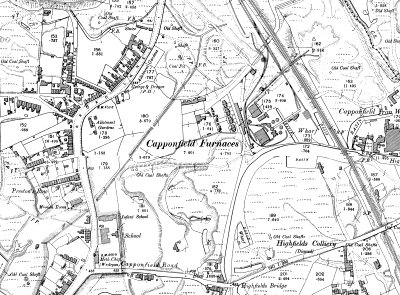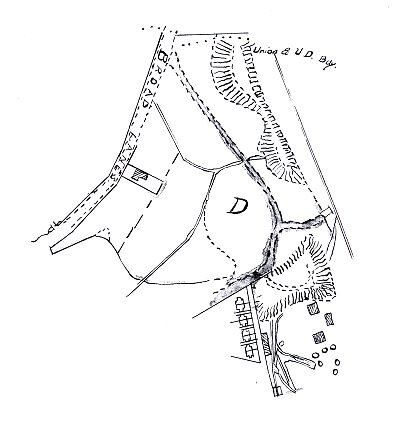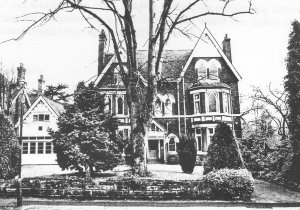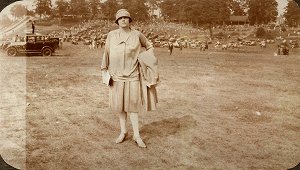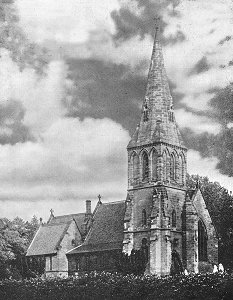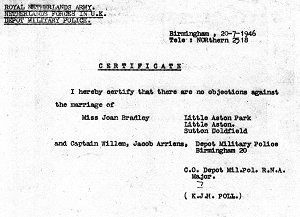11. The Bradley Family This information about the family is based almost entirely on the research of Jaap Arriens, who also supplied most of the images. Jaap's information, and some from other sources, has been assembled here by Frank Sharman
The founder of the firm was Walter S Bradley, whose father was an ironmaster, Thomas Bradley. Thomas and Isaac Bradley Thomas and Isaac were sons of William Bradley (born 1795 in Sedgley, died 1867 in Dudley) and Rose Hannah Hughes (born 1799, died 1879), who had married at All Saints, Sedgley, in 1816. Id addition to Thomas and Isaac they had two other sons, Benjamin and William John, and 4 daughters, Louisa, Mary Ann, Sarah and Hannah. In Kelly's Directory of 1868 Isaac Bradley was living at "Ettingshall Villa, Ettingshall", and Thomas lives on "Wellington Street", both of which would be good addresses, suggesting that they were already well established. The same directory also lists them as iron masters and proprietors , together with John Southan, of Brook Furnaces Iron Company. Nothing is known about this company but the Black Country Sites and Monuments Record shows several iron works beside Bilston Brook. One suspects that the Brook Furnaces were here. The same information appears in Post Office Directory of 1872 with the addition of the information that they are "makers of best & common foundry pig iron." In Kelly's Directory of 1880 Thomas and Isaac (without mention of John Southan) are listed as "iron masters, Capponfield". Presumably, since no mention is made of Brook Furnaces, they have left there altogether and acquired the Capponfield furnaces.
Of the Capponfield Furnaces the Black Country SMR, Site No. 10654, gives details of the ownership of the site from 1805, with Bagnals being in possession from 1839 to 1881. Then, in 1882 T & I Bradley appear. The SMR also records that the furnaces were blown out by the Bradleys around 1920, blown in again for one month in the late 1920s, and then gradually dismantled.
The document D/JSR/44/147 in the Wolverhampton City Achives is an "Abstract of the title to a piece of freehold land situate Broad Lanes in the County of Stafford" . The abstract recites a conveyance, in 1918, to Thomas and Isaac Bradley Ltd. of a piece of land of a little over 3 acres, fronting Broad Lanes "and known as Sandiford Meadow Estate" . (1918 is the year of W. S. Bradley’s death but there is no way of telling whether or not this is significant). This appears to be an extension of the Capponfield property. The abstract then recites a conveyance of 1932 by T & I Bradley Ltd to Bradley & Foster Ltd.. of land "known as the Caponfield Furnaces which said land was bounded on the north east by the GWR and the south by the BCN and on the west in part of Broad Lanes and contained an area of 12 acres 2 roods". This last sale involves a receiver acting on behalf of debenture holders but that does not mean the company was in receivership. It is likely that the Bradley Co. wanted to sell up and the denture holders had to be satisfied first. It is not known whether the occurrence of the name Bradley in Bradley and Foster Ltd indicates that the sale is an arrangement within the family or whether there is no connection at all. Walter S Bradley According to an account of the life and work of Walter S. Bradley, which appeared in the Birmingham Gazette on 16th September 1908 Walter S. Bradley was born in 1854 and educated at Wolverhampton Grammar School. The School Register (published in 1926) records, entering the school in 1866: "Bradley, Walter Smith. July 1854. Son of Thomas Bradley, Caponfield, Bilston. J. P.. Late of Somerset Grange, Edgbaston. Died March 17th, 1918". His birth certificate records that he was born in 1854 at Shut End, Kingswinford. In 1868 he is with his parents in Bilston. In 1881 he is with his parents at 8 Soho Road, Handsworth. (On the site of this house there now stands a large Sikh temple). In 1883 he married Sophia Margaret Lindley, who had been born in 1858 and was about four years his junior. She was from Staleybridge, Ashton-under-Lyme, near Manchester. They had three children, Hermon (born 1885), Irene (born 1888) and Hector (born 1891).
When it was on the market in 2005 it was described as being in a plot of about half an acre and having a drawing room, dining room, morning room/library/ breakfast kitchen, 8 bedrooms and three bathrooms, as well as a coach house and beautiful gardens. His initials were carved on the fire surround in the drawing room.
The report in the Birmingham Gazette notes that on the death of his father, in 1898, Walter not only took over the reins at Bradley’s but also took over his interest in the "Caponfield Furnaces" and became a life director of that company. It also notes that he was a member of the Birmingham Chamber of Commerce; that he was a strong Unionist and Tariff Reformer; and that he had declined invitations to enter public life – although he was a J.P. - and, in his limited spare time from work, "his recreations have been restricted to riding and driving and, latterly, motoring". (The "driving" referred to would have been carriage driving).
Walter S. Bradley died at Somerset Grange on 17th March 1918, aged 63. His wife, Sophia, died on 10th July,1921, aged 58. Hermon Bradley Hermon Bradley, the first son of Walter S, was born in 1885 and christened Cuthbert Hermon, but was always know as Hermon. He was educated at Rossall School. He joined the company in 1903 and took over control of it when his father died in 1918. His first wife was Eleanor M. Bird, whom he married in 1912. She was the daughter of Sir Alfred Bird, the inventor of baking powder and of Bird’s custard, and a millionaire, who lived at Tudor Grange. He died 1878. His son, Sir Alfred Bird, was MP for Wolverhampton West, from 1910 to 1922. Hermon and Eleanor had two children, Sylvia (always known as Brownie) who was born in 1914 and Lesley. When their mother, Eleanor, died early the two daughters went to live with their maternal grandmother at Tudor Grange. At this time Hermon was living in the Queen’s Hotel Birmingham, paying weekly visits to his daughter at Tudor Grange.
On leaving Birmingham Hermon bought a house called "Eyot Wood", at Shiplake on Thames. He also had a holiday home somewhere in Wales. His daughter, Brownie, recalls: "My father, who was a Bradley, made hardware, dustbins, stable buckets and so on. He lived in the Queen's Hotel in Birmingham and used to visit us every week. Then he met my stepmother, married her and bought a house at Shiplake, Henley, in Oxfordshire, because Daddy simply adored boats and had always longed to live by the water".
The stepmother was, of course, Hermon’s second wife, Marie Josette Tooth. They had two daughters, Pamela and Yvonne Jenifer (always known as Jenifer). In 1952 Jenifer married James Michael Dalrymple Symons. who participated in the 1948 Olympics in London. He was in the 1,000 metre Canadian Canoe pairs. He and his partner finished 8th out of 9. Hermon not only "adored boats" he had been, as a young man, a racing car enthusiast and is said to have driven at Brooklands. He remained noted for his fast driving for most of his life.
Brownie married Neville Crump, the most famous and successful national hunt trainer of the post-war years. He went on to win three Grand Nationals, five Scottish Grand Nationals and two Welsh Nationals. In a biography of Neville Crump ("Ever Loyal: the biography of Nevllie Crump, Tim Fitzgeorge-Parker, 1986) Brownie is described thus: "It was after Neville had decided to leave the Army that he met Brownie. In view of his total involvement with horses, it was fairly inevitable that he should meet the love of his life at a hunt ball. Twenty-year-old Sylvia Diana Bradley was enough to turn the head of any young man. Blonde, vivacious, with a lovely figure, she had a wonderful sense of humour and was always tremendous fun". Brownie's sister, Lesley, married Robert Leonard Duller, who served as a naval officer in Wolrd War 2 and later was a well know car racer at Brooklands. Hector Bradley Hector Bradley was Walter S. Bradley’s second son. He was born in 1891, married in 1922 and died in 1940. He had two children: a daughter, Joan and a son, Dennis. Hector joined the family company but when the First World War broke out his older brother, Hermon, stayed with the company and ran it, and its war work.
Hector "was put with the dead and the dying" (as his daughter Joan recalled) but miraculously survived and was sent back to England immediately, where the doctors told him that he would probably live for no more than 5 years. For the rest of his life he had to live with a stoma in his throat. He was gazetted Captain, perhaps on his leaving the army. He rejoined the company. In 1940 he took his own life, an act perhaps not unconnected with a feeling that the horrors of the first war were starting all over again. Vivienne Joan Bradley Joan (as she was always known) was Hector Bradley’s daughter. In August 1946 she married Captain Willem Jacob Arriens, Regiment Jagers, Royal Netherlands Army.
From the certificates that Willem had to obtain from the Dutch Army permitting him to marry, we learn that Joan was born at Lichfield on 21st March 1927 but her address at the time was Little Aston Park, Little Aston, Sutton Coldfield. Capt Arriens was born at Arnhem (Netherlands) on 5th September 1917. One of their children is Jaap Arriens who undertook the research on which this page is based. (Jaap also had to get Dutch Armey permission to marry when he married Joy in 1972!).
The reception was at "Greenways", Little Aston Park. The bride "wore a white crepe dress with train and lace veil (which was a family heirloom) and a pearly necklace, a gift from her mother She carried a sheaf of white lilies". "The two attendants, Miss Monique Genevieve Steen, cousin of the bride, and Miss Judith Esther Brooks, friend of the bride, wore duck egg blue dresses with heart shaped headdresses trimmed with flowers to match the posies which they carried". Joan was given away by her uncle, Hermon. Dennis Bradley
|
||||||||||||||||||||||||||||||||||


